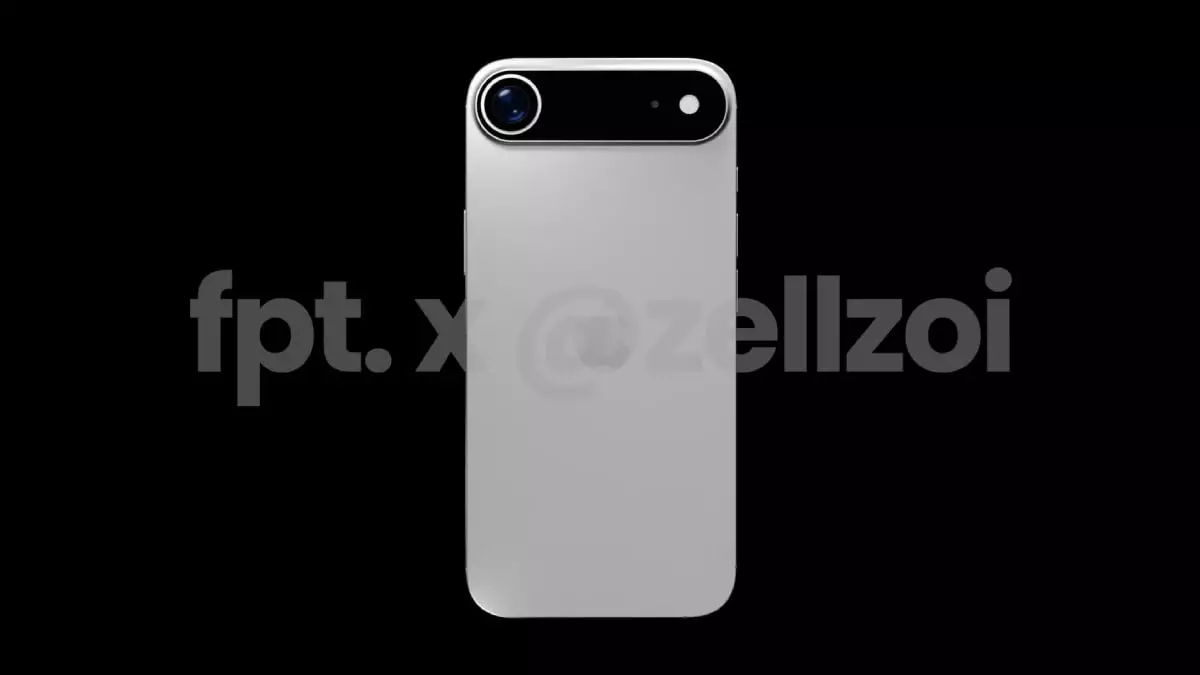The iPhone 17 Air is poised to make waves in the smartphone industry with its stunningly thin profile of just 5.5mm. While this astonishing thinness offers an appealing aesthetic and a lightweight experience, it raises serious concerns about usability and functionality. Apple has consistently prioritized style over substance, but the iPhone 17 Air takes this trend to new extremes. By removing the physical SIM slot altogether, Apple seems to embrace an all-digital future, potentially alienating users who still value traditional options.
This design isn’t merely about looking sleek; it challenges consumers to rethink what they value in a smartphone. Is external functionality worth sacrificing for the sake of portability? The Apple ethos has always been about convenience and innovation, but with this hefty engineering choice, one wonders if they are sacrificing user experience on the altar of style.
Same Size, But Greater Capability?
Interestingly, the iPhone 17 Air is said to share dimensions with the iPhone 17 Pro Max, both boasting a height of 163mm and a width of 77.6mm. In a market where manufacturers compete on features, the fact that the iPhone 17 Air is almost identical in size to its more advanced cousin raises questions about innovation and differentiation. Will effectively making the same-sixed device merely thinner be enough to sway users away from the more capable Pro Max?
Consumers desire more than just a sleek design; they want powerful features that enhance their daily lives. The inclusion of a single rear camera on the iPhone 17 Air as opposed to the triple camera setup on the Pro Max further emphasizes a troubling trend in Apple’s recent designs. A single lens can’t compete with the advanced photography features more serious users crave, risking alienation. This may send some would-be Apple loyalists scuttling to rival brands that offer a better balance between aesthetics and functionality.
Materials Matter
In a remarkable move, Apple is reportedly set to equip the iPhone 17 Air with a titanium frame, diverging from the standard aluminum used in prior models. This decision may reverberate through the industry as titanium represents a durable yet lightweight option. However, this raises a consideration: Is this move an ethical choice meant to elevate the device, or is it a marketing tactic aimed at recycling buzz around the “premium” feeling of the iPhone?
With the switch from stainless steel to titanium in their Pro models and aluminum in standard ones, one can’t help but feel that Apple is using its material choices to segment its offerings. Additionally, it leaves many consumers wondering how valuable titanium actually is in a layer meant to protect a fragile screen. While the tech world praises innovation, one must contemplate if Apple is merely polishing a less valuable product with a shiny new frame.
Compromised Performance for Slim Design
While the iPhone 17 Air boasts a 6.9-inch LTPO AMOLED display—a delightful upgrade over its predecessor, the iPhone 16 Plus—there are undercurrents of disappointment in performance expectations. To align itself with the new slim framework, both the iPhone 17 Air and its rival, the Samsung Galaxy S25 Edge, may be forced to limit battery size. In a world where battery life is becoming increasingly crucial, offering a smartphone that’s not equipped to last can be a significant drawback.
Is Apple prepared to sacrifice user experience for a slimmer device? Time will tell, but early speculation suggests that consumers might need to reconsider what they want from their smartphones. An ultra-slim phone that runs out of power before dinner can hardly be a game-changer.
Market Dynamics Shifting
As we anticipate the formal unveiling of the iPhone 17 Air, it’s essential to acknowledge the broader implications this device could hold for market dynamics. Apple has a loyal consumer base, yet the smartphone landscape is evolving. Competitors are pushing boundaries with features designed to cater to user needs, while Apple seems to be inching towards a model that prioritizes form over function.
Is there an invisible line being crossed? As Apple treads into the territory of increased thinness and diminished functionality, many observers are left wondering if they’ve crossed the threshold from desirable innovation into reckless design decisions. In a rapidly changing technological climate, time will reveal whether the iPhone 17 Air will be hailed as a revolutionary leap or quietly become another footnote in Apple’s storied history.

